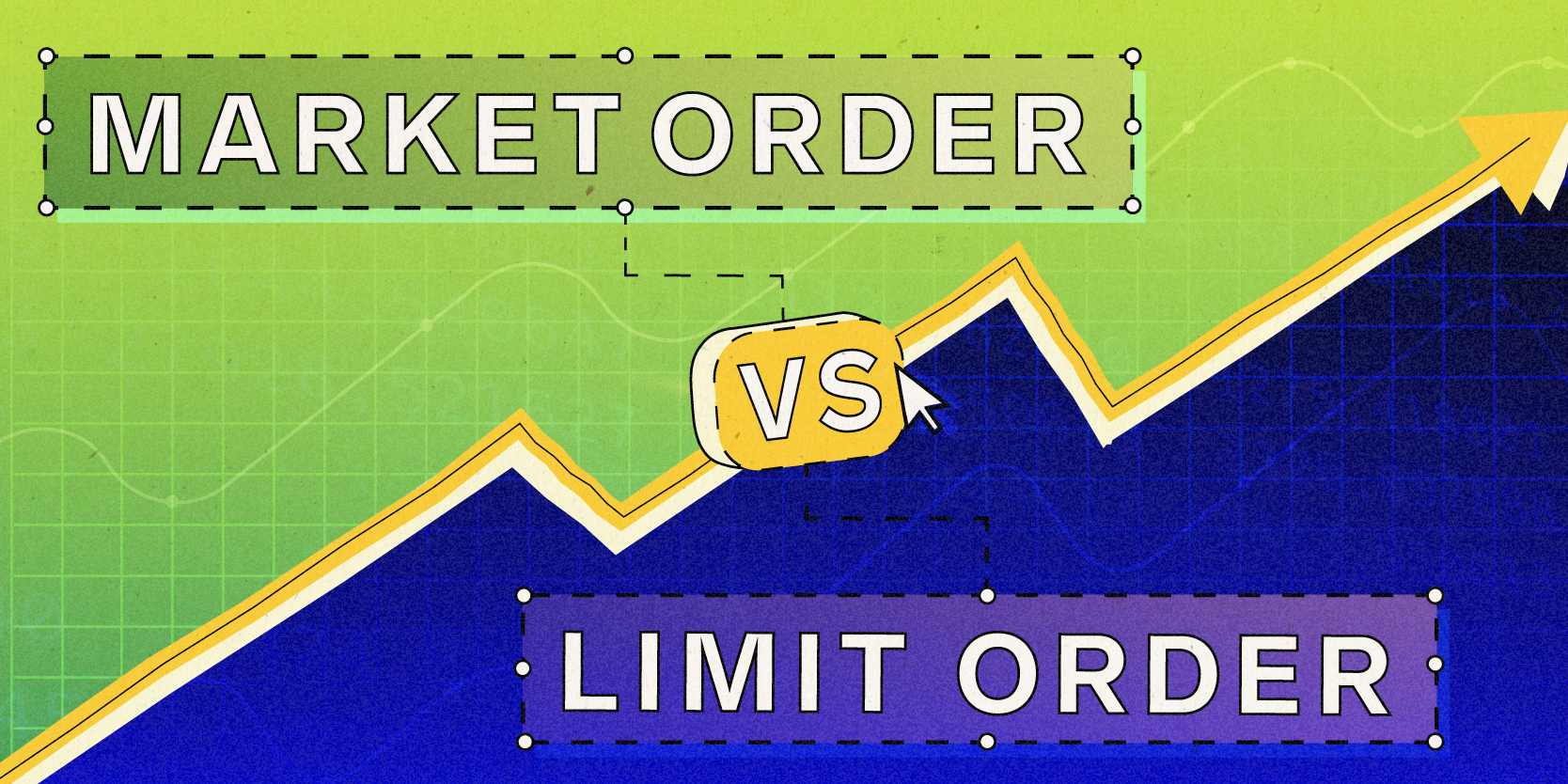
Alyssa Powell/Insider
- A market order is an order to buy or sell a security immediately, guaranteeing an execution but not a price.
- A limit order is an order to buy or sell a security at a specific price, or better, and isn't guaranteed to be executed.
- Each of these order types give investors more control over their money, but they do have their drawbacks.
- Visit Insider's Investing Reference library for more stories.
Other than actually selecting specific securities to buy or sell, one of the biggest decisions that investors make is how to get the trade done: with a market order or a limit order. These two order types tell your broker exactly how to execute your trade – selecting the right order type can save you money, or help you snatch up more money on your trade.
Market order vs. limit order: At a glance
Market and limit orders can give investors an added layer of flexibility in their trading decisions. Market orders generally let them quickly execute a buy or sell, while a limit order can ensure that they don't pay too much for a security, or sell it for too low of a price. Here are the two order types in a nutshell:
- A market order is an instruction to buy or sell a security immediately, regardless of the current price.
- A limit order specifies an upper or lower value for a buy or sell transaction.
Let's take a closer look at each of these order types.
What is a market order?
A market order is an instruction to buy or sell a security immediately. It guarantees that the order will be executed, but does not guarantee the price since the prices of securities are always changing – even as you place your order.
A market order to buy assets generally will execute at or near the current bid – what an investor is willing to pay for to buy the security – while a market sell order usually executes close to the current ask, or the price at which the owner of the security is willing to sell.
But it's important to remember that the most recently traded buy or sell price may not be the same as your execution price, particularly if the individual stock or the broader market is volatile. "The volume of market orders tends to outpace limit orders," says Bryan Kuderna, CFP® and founder of Kuderna Financial Team. But it's not unusual to see an uptick in limit orders during periods of volatility.
| Pros | Cons |
|
|
What is a limit order?
A limit order is one type of order that lets an investor set a cap (or "limit") on the maximum per-share amount they're willing to pay for a security - or the minimum amount they'll accept on a sale. Think of it as a kind of fence around the price - a buy limit order or a sell limit order offers individuals more control over their investments. On the buy side, a limit order can only be executed at or below a price set by the investor. On the sell side, the transaction can only go through at a price that's equal to or higher than the amount set by the investor.
"A limit order gives the investor some control of the price at which they add or remove securities from their portfolio, particularly for volatile stocks," Kuderna adds. "The pitfall here is that if the security moves in the wrong direction, the investor can miss out on the desired buy or sell price as the order won't take place."
So a buy-side investor may try to shave a bit off the current market price with a limit buy order, but miss the boat completely if the stock takes off. On the sell side, someone who wanted to hold out for even a few cents more than the current market value could get stuck with a lemon if the stock price plunges.
While a limit order can be useful in controlling how much you pay for a stock, it doesn't come without its drawbacks. "[Limit orders] can be more complicated to execute, particularly for thinly traded stocks," says Kuderna. "This can sometimes result in higher fees and/or specific orders actually not taking place if there's not enough liquidity in the market when the order is triggered."
| Pros | Cons |
|
|
The financial takeaway
Market and limit orders are two types of orders that investors can use to better control how they invest their money and at what price. But these two options do come with some downsides.
The choice of a market order or limit order will depend on the specific circumstances of your trade. Generally, if you aren't worried about not getting a specific price, a market order will go a long way towards ensuring that your transaction gets executed in a timely manner.
But if you're concerned about a specific price, a limit order probably makes more sense, since the transaction won't occur unless you get your price. But it could take longer and you could miss the boat on a fast-moving stock or a volatile market. Before going with a market or limit order, consider how these and other related issues fit into your investment strategy.
